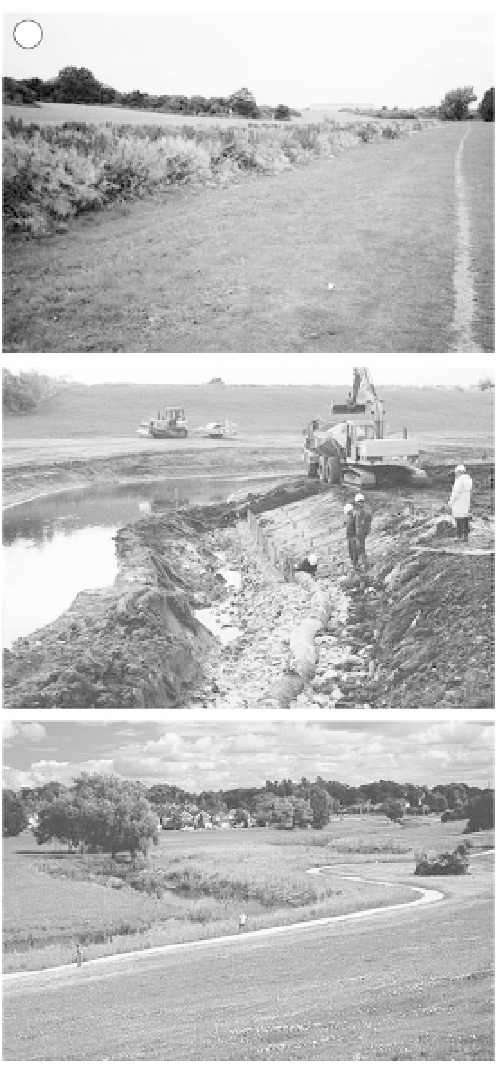Environmental Engineering Reference
In-Depth Information
for the local community and a local amenity area
(see Fig. 11.6). The work involved restoring the once
meandering planform, in-channel deflectors to re-
create sinuosity and flow diversity, bank re-profiling,
channel narrowing, spoil disposal, landscaping, sur-
face-water outfall rationalization, backwater creation,
soft-revetment engineering, increasing floodplain
storage, extensive marginal planting of native species
and the creation of wetland scrapes. This project was
funded by the EU, statutory government environ-
mental agencies and the landowner (the local coun-
cil), with an emphasis on engaging the local public
so that river ownership could be assured. Many con-
straints had to be overcome but the final project
has achieved its aims of restoring a more-natural river
system which has a greater self-regulatory capacity
with benefits for flood management, wildlife, amenity
and water quality. The essential urban compromise led
to a watercourse with implicit amenity and landscape
appeal; 'a piece of countryside in a town'.
A
B
11.5.2 Denmark
It is estimated that 97% of Denmark's 30,000 km of
natural rivers have been altered in their physical
form (Brookes 1984). In addition another 30,000 km
of man-made watercourses exist designed to drain
wetlands and floodplains and to increase agricultural
production. Much of the work to drain Denmark was
undertaken in the last century, together with fish farm-
ing and industrial and urban expansion. Channeliza-
tion was also frequently accompanied by mills and other
structures, effectively denying free passage to fish and
macro-invertebrates. Through legislation and changes
to the administration of Danish watercourses, man-
agement improvements and river restoration have
been implemented since the mid 1980s. Twenty-four
such schemes are detailed in Hansen (1996). Many of
these consist of repair to the physical form after
water quality standards have been achieved. In 1996,
arising from the above joint Danish/UK collaboration,
Denmark established the basis for the European
Centre for River Restoration.
C
Fig. 11.6
(a) River Skerne, Darlington, County
Durham, UK, before restoration. (b) Log toe revetment
during construction on the River Skerne. (c) River
Skerne after restoration. Courtesy of Northumbrian
Water, UK.
The Skjern River restoration project
Between 1962 and 1968 the River Skjern system, the
largest river in Denmark, was channelized and





